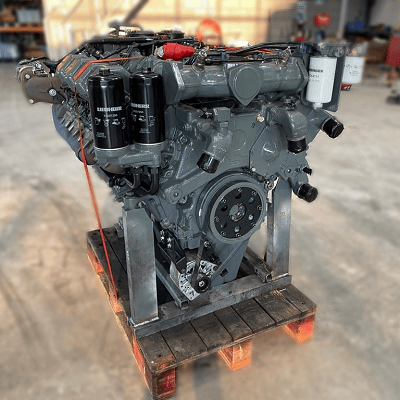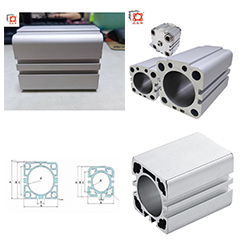The process of a dyno test on a Liebherr engine

When it comes to heavy machinery, reliability and power are paramount. Liebherr, a name synonymous with innovation and excellence in engineering, stands tall as a pioneer in the realm of heavy equipment and machinery. From towering cranes to robust excavators, Liebherr’s engineering prowess extends to the heart of these machines. We delve into the world of dyno testing a Liebherr engine, uncovering the meticulous process behind unleashing the raw power concealed within.
The foundation of excellence
Before we embark on the journey of dyno testing, it’s crucial to understand the foundation upon which Liebherr engines are built. With decades of engineering expertise and commitment to quality, Liebherr engines are crafted to withstand the most demanding environment and deliver unparalleled performance. Each component is meticulously designed and rigorously tested to ensure reliability, efficiency and longevity.
The process
1 Preparation: The engine undergoes meticulous preparation before being mounted onto the dynamo meter. This includes ensuring all connections are secure, fluids are filled to the appropriate levels, and sensors are properly calibrated.
2 Mounting: The engine is carefully mounted onto the dynamometer, a specialized device designed to simulate real-world operating conditions. Precision is paramount during this step to ensure accurate results.
3 Initial checks: Once mounted, a series of initial checks are conducted to verify proper alignment, connection integrity, and functionality of all engine systems.
4 Warm-up: The engine is started and allowed to warm up to operating temperature. This ensures consistent results and minimizes the risk of damage during testing.
5 Baseline testing: With the engine warmed up , baseline tests are conducted to establish initial performance metrics. This includes measuring power output, torque, fuel consumption, and emissions at various RPM levels.
6 Load testing: The engine is subjected to progressively increasing loads to simulate different operating conditions, such as idle, partial load and full load. This allows engineers to assess performance across the entire operating range and identify any potential issues or optimization.
7 Data analysis: Throughout the testing process, data is continuously collected and analyzed in real-time. Advanced instrumentation and software are used to monitor performance metrics and identify trends or anomalies.
8 Optimazation: Based on the data analysis, adjustments may be made to optimize engine performance. This could involve fine-tuning fuel injection timing, adjusting air-fuel ratios, or optimize turbocharger boost pressure.
9 Validation: Once testing is complete, the results are meticulously reviewed and validated against predetermined criteria and specifications. Any deviations or anomalies are thoroughly investigated to ensure accuracy and reliability.
10 Reporting: Finally, a comprehensive report is generated detailing the results of the dyno testing, including performance metrics, observations, and any recommendations for further optimization or refinement.
The outcome of dyno testing
Dyno testing a Liebherr engine is more than just a routine procedure – it’s a testament to the unwavering commitment to excellence that defines Liebherr’s engineering philosophy. By subjecting their engines to rigorous testing and analysis, Liebherr ensures that each engine delivers the uncompromising performance, reliability, and efficiency that customers expect.
In conclusion, dyno testing a Liebherr engine is not just about measuring power output. It’s about unlocking the true potential of these remarkable engines and ensuring they exceed expectations in the most challenging environments imaginable.
ADVU/ADVV Pneumatic Cylinder Barrel
ADVU double-acting Compact Air Cylinder
AEVU single-acting push type Compact Air Cylinder
AEVUD single-acting pull type Compact Pneumatic Cylinder
ADW compa Preamaic 0yinder compae m s052 S aad o tes a ompadAr c me ste are tasaessa mms d te st tpe ftre atehe tan m peameseotigem
Bore Sizes: 16.25.32.40,50.63,80.100
Stroke Lengths: 5,10,15,20,25,30,35,40,45,50,75,100,200,300mm Pneumatic Cylinder Tube
Operating Pressure: 0.13-1.0 MPa
Speed:30-800mm/s;
Working Environment Temperature: -10 to 80°C

The ADVU cylinder is a compact cylinder produced by the German company Festo, known for its small size and high efficiency. The ADVU series is typically classified as thin or compact cylinders, suitable for applications with limited space.
Here are some characteristics and specifications of Festo ADVU cylinders:
Integrated design:
The motor is usually integrated with the cylinder body.
The controller and cables are also part of the system.
Installation and adjustment:
The installation position of the magnetic switch is reserved on the surface of the cylinder block, which makes it very easy to install and adjust the position of the magnetic switch.
Model and size:
The ADVU series offers a variety of sizes to choose from, such as 12, 16, 20, 40, 50, 63, and other models with different cylinder diameters.
Different travel lengths are available for selection to meet different application requirements.
Technical parameters:
The diameter of the piston can vary depending on the model.
The length of the trip will also vary depending on the specific model.
The buffering type is generally an elastic buffering ring/pad at both ends.
The installation position is flexible and can be installed in different directions.
The operating mode is usually double acting, meaning that the piston can be pushed in two directions by compressed air.
Application areas:
Due to its compact design, ADVU cylinders are commonly used in automated equipment that requires space saving, such as packaging machinery, electronic assembly lines, etc.
ADVU/ADVV Pneumatic Cylinder Barrel,ADVU Pneumatic Cylinder Barrel,ADVV Pneumatic Cylinder Barrel,ADVU Pneumatic Cylinder Tube
Foshan Weiyingjia Technology Co., Ltd , https://www.wyspneumatic.com